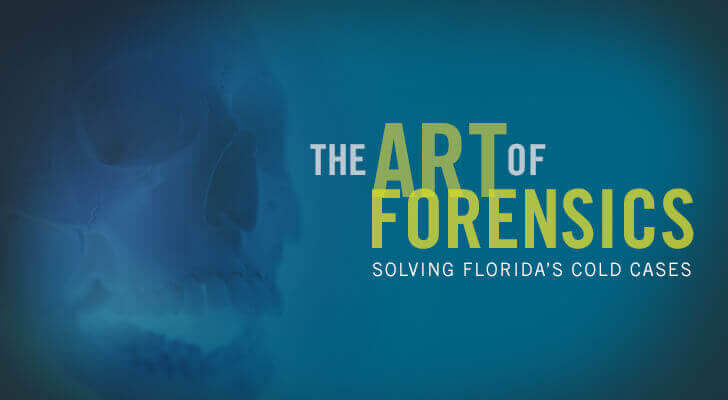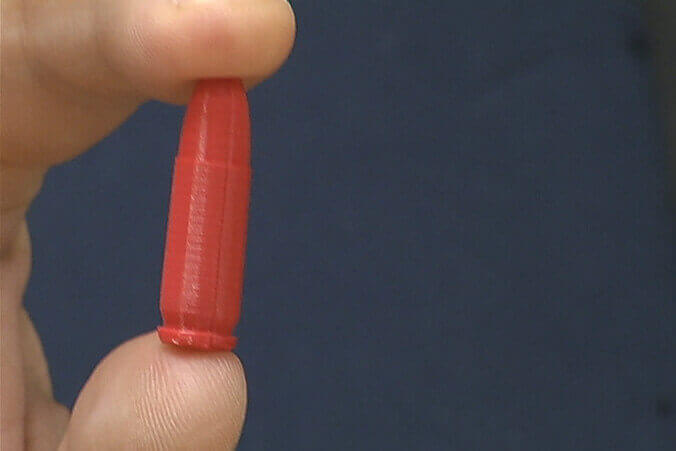3D printing technology is sometimes misused to create guns and other weapons. But it can also be used to help solve crimes and heal victims.
The introduction of the first functional 3D printed gun in 2013, ‘The Liberator’, raised a host of legal and ethical questions. In fact, because it is much more expensive and less functional than a store-bought equivalent, raising such questions was perhaps main purpose of the 3D printed gun — to take a strong anti-government and anti-regulatory stance by placing manufacturing technology in the hands of individuals.
As gun regulation comes to the fore of American political debate once again, the ability to print guns on demand becomes an important philosophical consideration. On a practical level, law enforcement is eager to curb the proliferation of home-made guns. But there’s an ongoing push-pull between government regulation and the impossibility of regulating what is printed.
Japanese police are particularly concerned; last year, a man who displayed his 3D printed gun collection online was arrested, the first case of this kind. But probably not the last. A detective with the Hyogo police department describes the potential role of 3D printed guns in Yakuza gang violence; “Print, kill, melt the gun. Those new guns will be hard to trace…. Escalation could be very fast and very bloody.”
Other experts suggest that this might just be the beginning. Professors at Louisiana State University urge the government to redouble their efforts to prevent 3D weapons manufacture, as with advances in additive manufacturing comes the threat of — if you can believe it — DIY nukes.
In an article for the Washington Post, Professors Daniel Tirone and James Gilley caution, “3-D printing promises to be the largest change in production methods since the Industrial Revolution. Let’s be ready for the dangers.”
Their line of argument goes like this. Biologists can combine biological material (live cells) with printed artificial materials to create new organs and dream of printing human organs directly. Chemical printing is also here — even at a molecular level. And mixing materials is easier than ever. Space X and others already using 3D printing technology in developing and manufacturing rocket parts.
So while claims of homemade nuclear bombs might seem alarmist, they are worth considering for their long-term implications. 3D printed nuclear weapons are unlikely to cause a worldwide arms race, but they do raise an important question about the ethics and consequences of such advanced technology, and how it is distributed into peoples’ homes.
But 3D printing can also help solve crimes
Florida scientists are now using 3D printing to help solve nine cold cases. For these nine murder cases with unidentified victims, the evidence was extremely limited — usually just the body itself. And because forensic sculptors aren’t given direct access to these skulls, there’s a lot of guesswork involved in the process.
But researchers at the University of South Florida have scanned and printed 3D printed replicas of the victims’ skulls. These will then be given to forensic artists with the National Center for Exploited and Missing Children, who will use the bone structure to fill out the faces with clay, sculpting artists’ renderings of the deceased.
Using the actual bone structure as a basis for the models should make them much more accurate. This unique collaboration between law enforcement , scientific researchers, and forensic artists marks the formal re-opening of these cases: seven adults, and two children.
Combined with new skeletal testing and chemical analysis of the remains, the team aims to identify the victims, solve the crimes, and give people closure.
Sometimes, that closure is for the victims themselves.
When Laquan Taylor was shot in the back and paralyzed, the victim of a carjacking, he went to the James A. Haley VA Hospital in Tampa, Florida for treatment, where he met Jamie Kaplan.
Kaplan raised funds for a 3D printer, having heard that other hospitals use 3D printers to make custom prosthetics. Splints and other assistive devices help injured returning vets transition to the physical demands of civilian life, but printing their own can be doubly empowering. By putting the technology in the hands of the patients themselves, Kaplan and his patients have discovered even more uses for a 3D printer at the VA.
Taylor suffered an injury in the T-12 vertebra of his thoracic spine, but who really knows what that means? So Kaplan and Taylor 3D printed a model of the vertebra to see exactly what the bone looks like.
Kaplan uses 3D printing to help vets visualize their injuries, empowering them to better understand their condition and begin the emotional — as well as physical — journey of healing. Kaplan explains: “I’m a tactile person. For me to be able to hold it and manipulate it in my hand, that gives me true understanding.”
But for Taylor, some of that understanding isn’t just about how his spinal cord works — it’s about the trauma of the injury itself. Taylor has 3D printed a copy of the bullet that injured him, which he now wears as a necklace.
As he explains in his own words, for Taylor, this says “I’m still me and I’ve progressed in my rehab to the point where I’m comfortable seeing what put me here.”
https://youtu.be/RXW-lLL25CY
License: The text of "Fighting Crime and Healing Victims with 3D Printing" by All3DP is licensed under a Creative Commons Attribution 4.0 International License.


